
Difference between All purpose flour and Bread flour All purpose
Rich in Fiber. Rice flour is a good source of dietary fiber, which can help to regulate digestion and bowel movements. Additionally, fiber is known to help regulate blood sugar levels and reduce the risk of heart disease and other chronic conditions.
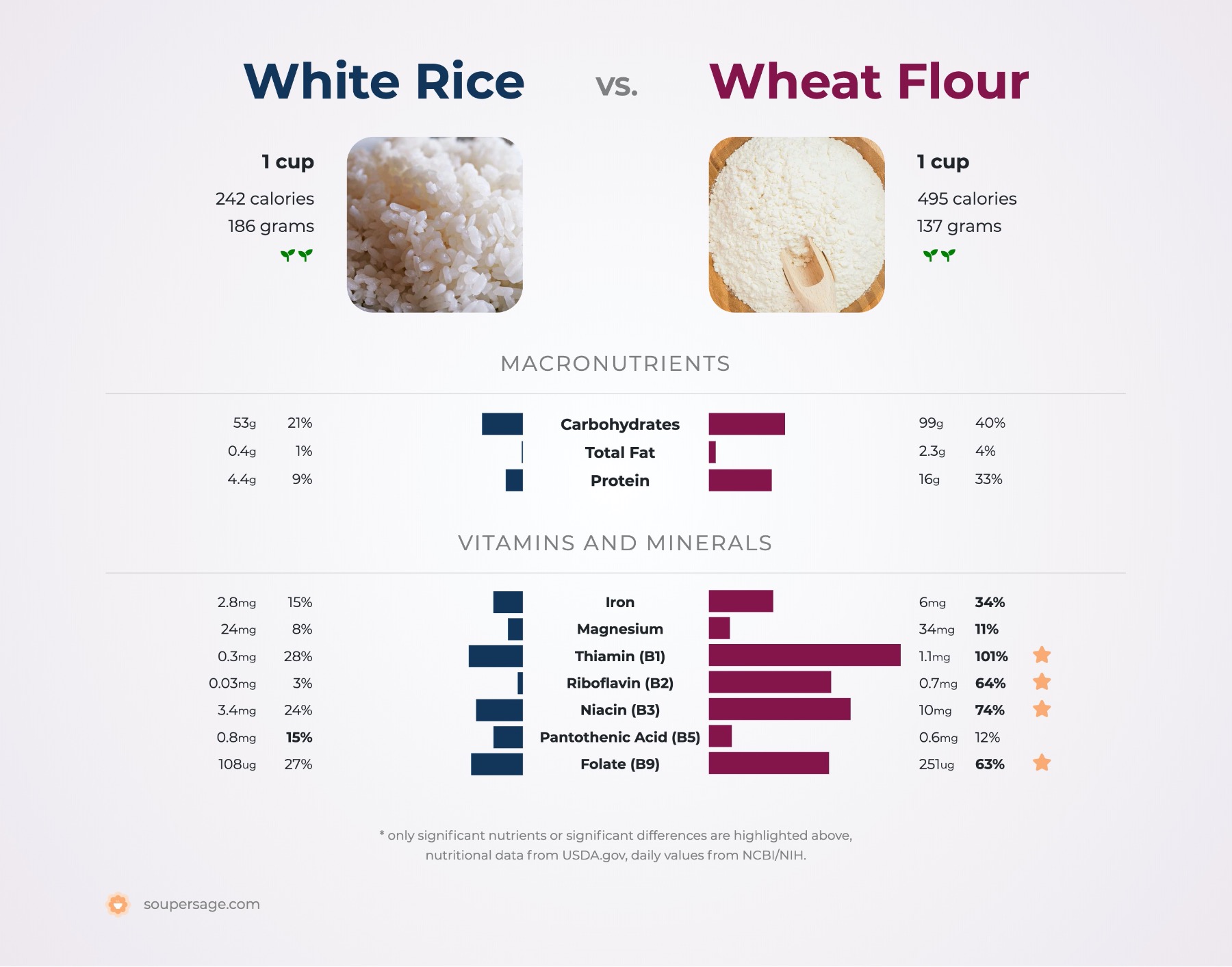
Nutrition Comparison White Rice Vs Wheat Flour
When it comes to rice flour and white flour, there are a few key differences that set them apart. Rice flour is made from finely ground rice grains, and is often used in gluten-free baking as a substitute for wheat flour. It has a light, powdery texture and a mild flavor, making it a versatile ingredient in a variety of dishes..

Every Type of Flour Explained—From AllPurpose to Type 00 Stories
In the culinary realm, rice reigns supreme, its versatile grains gracing both sweet and savory creations.However, when it comes to flour, the distinction between rice flour and rice powder flour can be a source of confusion. This blog post delves into the depths of these two rice-based ingredients, exploring their similarities, differences, and culinary applications to empower you with the.
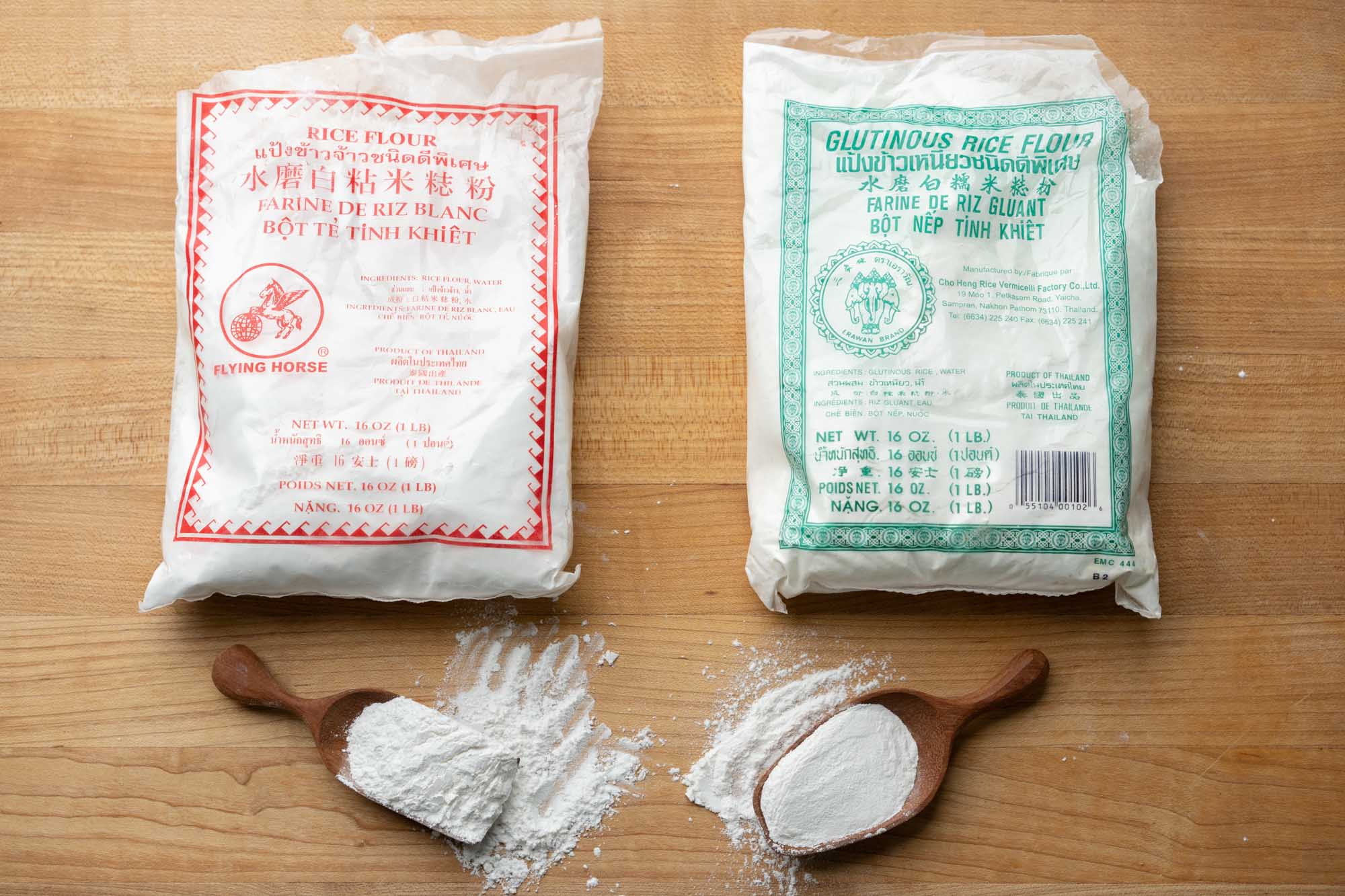
Zár Tréfás divat short grain rice powder Torok halom Szörnyű
It is a flavorless gluten-free ingredient. Sorghum flour - can be used as a direct substitute for sweet rice flour but is best used for baking. Almond flour - can be used as a substitute, but it is best used when baking due to its unique flavor. To substitute glutinous rice flour, use 1 1/2 cup of almond flour instead of glutinous rice flour.
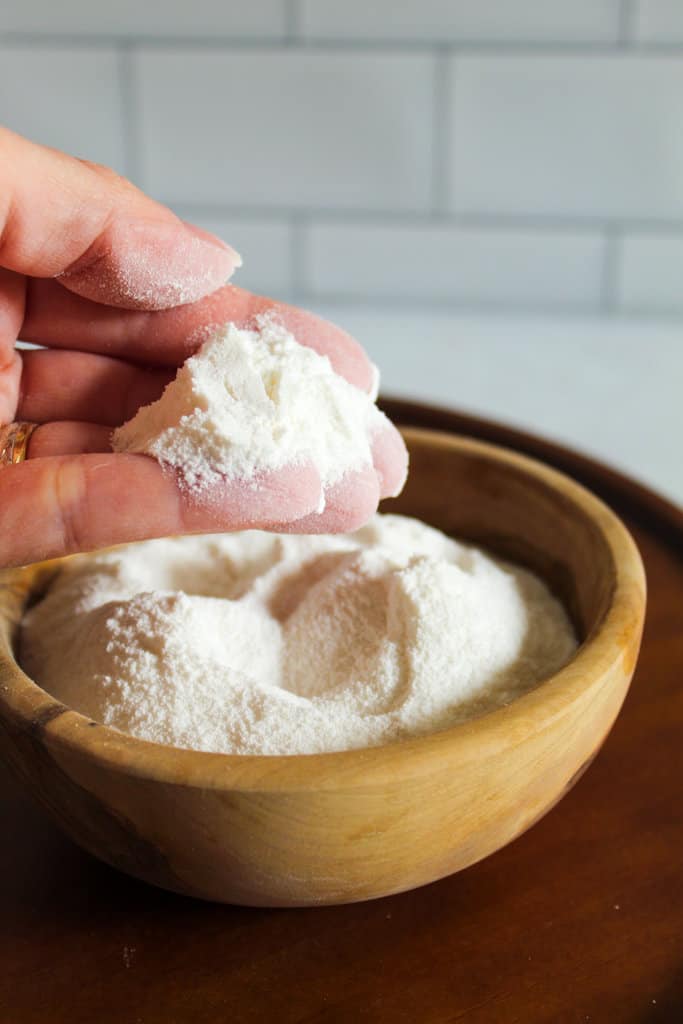
Rice Flour vs Sweet Rice Flour Zest for Baking
Differences between rice flour and all-purpose flour. The main difference between rice flour and all-purpose flour is that rice flour is gluten-free and allergen-free, while all-purpose flour contains gluten, giving baked goods their structure and elasticity. Because rice flour doesn't contain gluten, it's not suitable for making bread or.

Rice Flour vs Sweet Rice Flour, Which is Better and Why
How Rice Flour Differs From Glutinous Rice Flour. Written by MasterClass. Last updated: Jun 7, 2021 • 2 min read. From the stretch of a sesame bun to the characteristic chew of fresh sourdough, both are irresistible but worlds apart in the realm of flour. From the stretch of a sesame bun to the characteristic chew of fresh sourdough, both are.
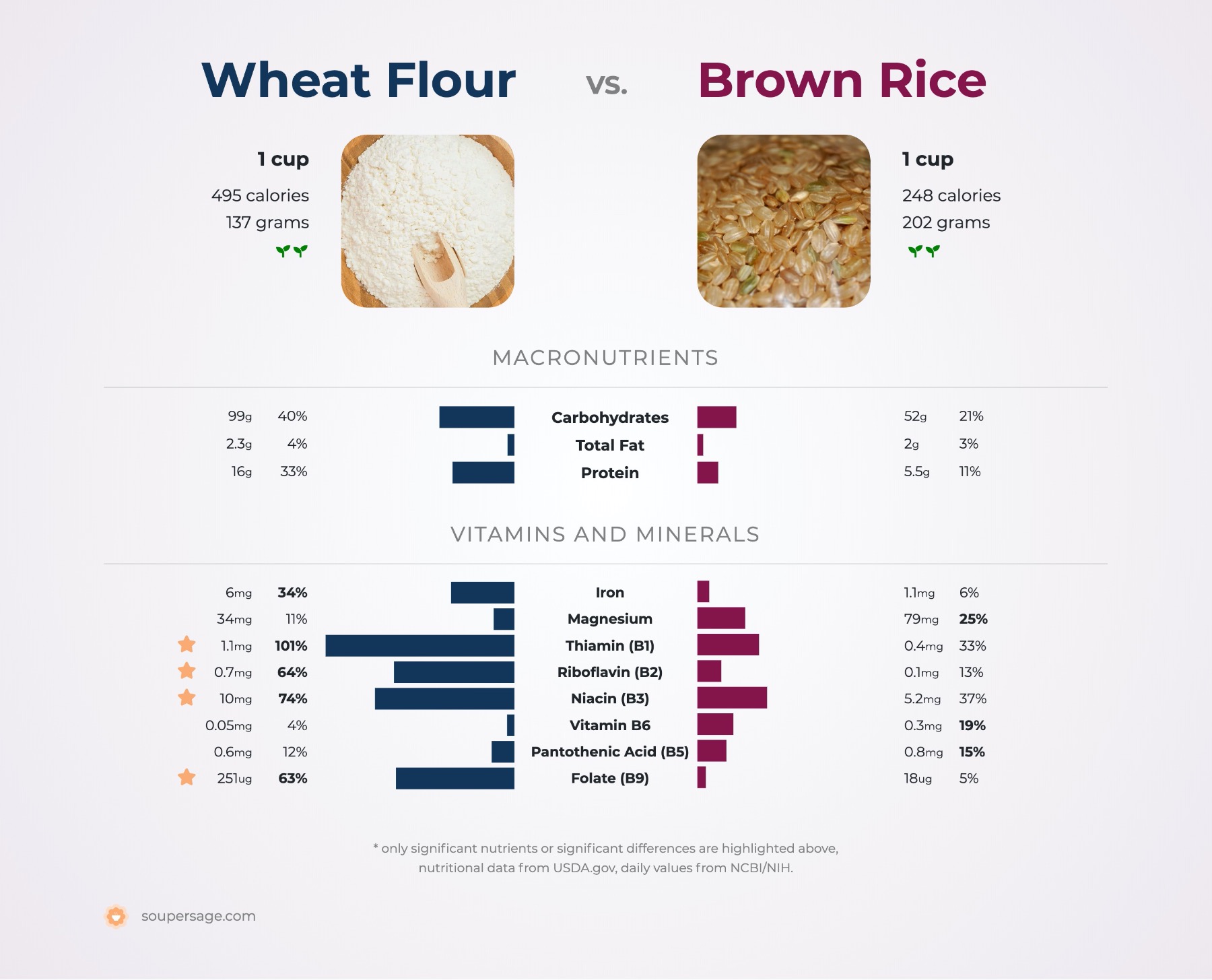
Flour Vs Wheat Nutrition Besto Blog
When substituting rice flour for all-purpose flour as a thickener, use a 1:1 ratio. Both of these ingredients will provide a similar amount of thickness to any type of recipe. When replacing all-purpose flour with rice flour in baked recipes you will want to use slightly less rice flour than the amount of all purpose flour your recipe calls for.

Rice Flour vs AllPurpose Flour Which Is Better? The Coconut Mama
One of the main differences between rice flour and tapioca flour is their nutritional content. Rice flour is a good source of carbohydrates, protein, and fiber, while tapioca flour is a good source of carbohydrates and protein. Both flours are low in fat and contain no cholesterol. Another difference between the two flours is their texture.

Difference Between Rice Flour and Sweet Rice Flour
Structure: All-purpose flour provides more structure and elasticity, making it better for breads and pastries. Tenderness: Rice flour creates more tender baked goods, suitable for cookies and muffins. Flavor: All-purpose flour has a neutral flavor, while rice flour adds a slightly nutty sweetness.
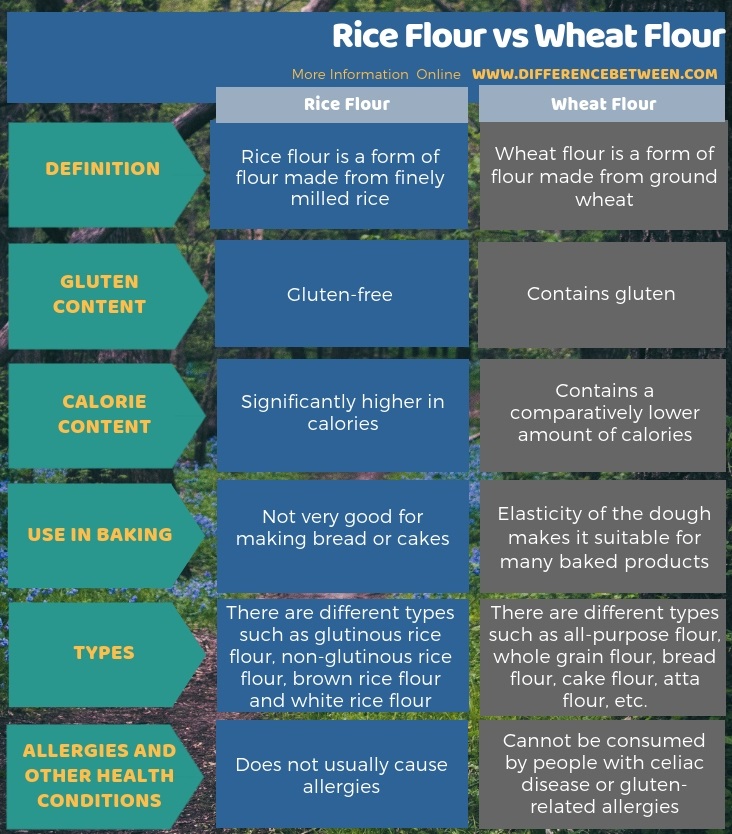
Difference Between Rice Flour and Wheat Flour Compare the Difference
What are the main differences between Rice and Flour? Rice has less Vitamin B1, Selenium, Iron, Vitamin B2, Folate, Vitamin B3, Phosphorus, Fiber, Manganese, and Copper than Flour. Flour's daily need coverage for Vitamin B1 is 52% higher. We used Rice, white, long-grain, regular, enriched, cooked and Wheat flour, white, all-purpose, enriched.

Cake Flour Vs. AllPurpose Flour What's the Difference and How to
Beyond Celiac notes that rice flour can be used in combination with other gluten-free flours — like sorghum, oat and tapioca — and a gum such as xanthan — in place of all-purpose flour in baking. It can be partly swapped for all-purpose flour in some recipes but can't be used as a 1:1 substitute. Read more: 10 Gluten-Free Dessert Recipes From Coconut Milk Panna Cotta to Sweet.

Glutinous Rice Flour Substitute
Rice flour has a very light consistency and therefore makes for a good coating. Its consistency is lighter compared to that of all-purpose flour. Neutral flavor. Rice flour has a neutral flavor and will therefore not interfere with the flavor of whatever you are frying. Absorbs the flavor of herbs and spices well.

Rice Flour vs. Glutinous Rice Flour What are the Differences?
3. 4. Glycemic index score. 50. 85. As you can see, brown rice flour is much higher in calories and carbs than all-purpose flour. However, brown rice is a complex carbohydrate, meaning it is digested more slowly which helps to regulate blood sugar levels. This is also why it has a low glycemic index (GI) of 50.
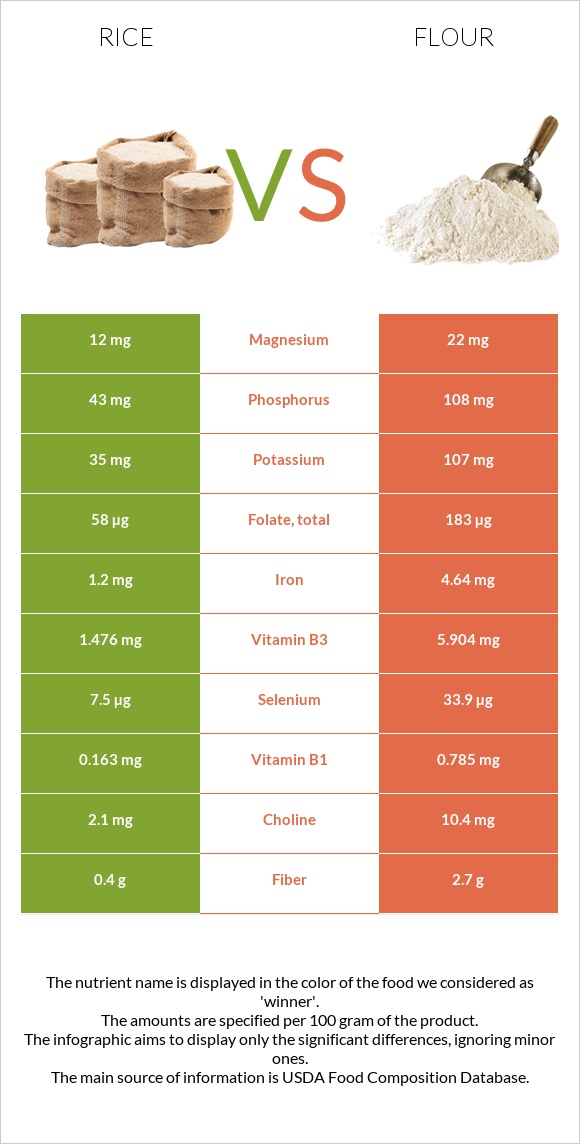
Rice vs Flour InDepth Nutrition Comparison
The flours have very different textures, cook very differently and yield very different results. Rice flour is closer to wheat flour and yields a cake-like consistency whereas Glutinous Rice Flour yields a sticky and chewy texture suitable for dumplings or foods that don't require much structure.
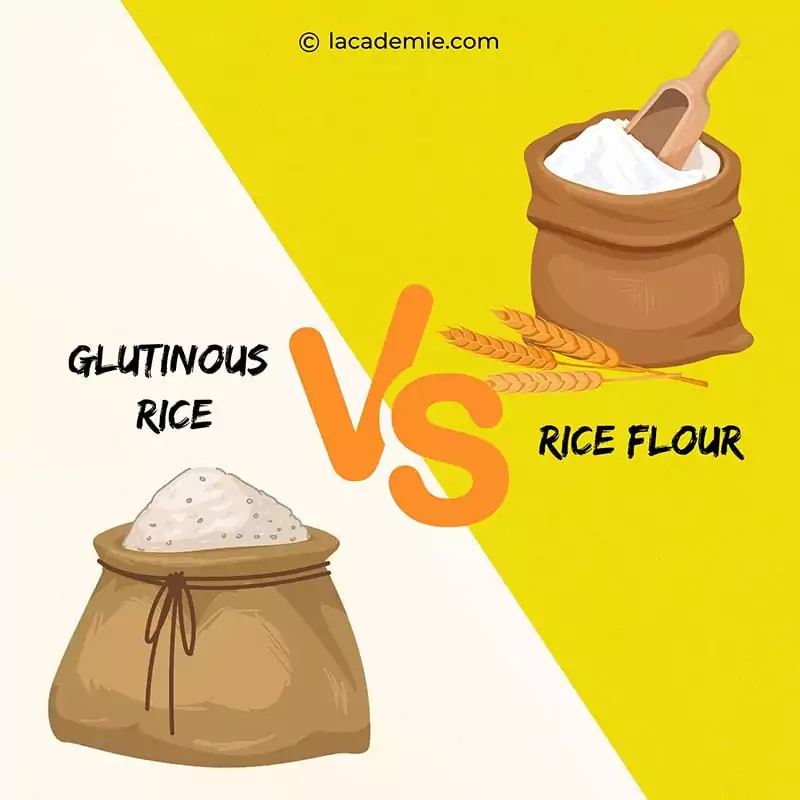
Rice Flour Vs. Glutinous Rice Flour Similarity And Contrast 2023
Rice Flour Vs. Regular Flour: The Use Cases. Rice flour is a type of flour made from finely ground rice. It is a common ingredient in many Asian dishes, such as rice cakes, rice noodles, and fried rice. It can also be used to make gluten-free baked goods, such as cookies, cupcakes, and bread.

Types of Flour & When to Use Them Healthy Family Project
Rice Flour. Rice flour is made from ground medium- or long-grain rice. It can be made with brown or white rice. Brown rice flour is made from whole grain rice and will have a slightly nutty flavor. White rice flour is made from white rice without the bran and will be tasteless. Some of the popular ways rice flour is used are to make noodles.